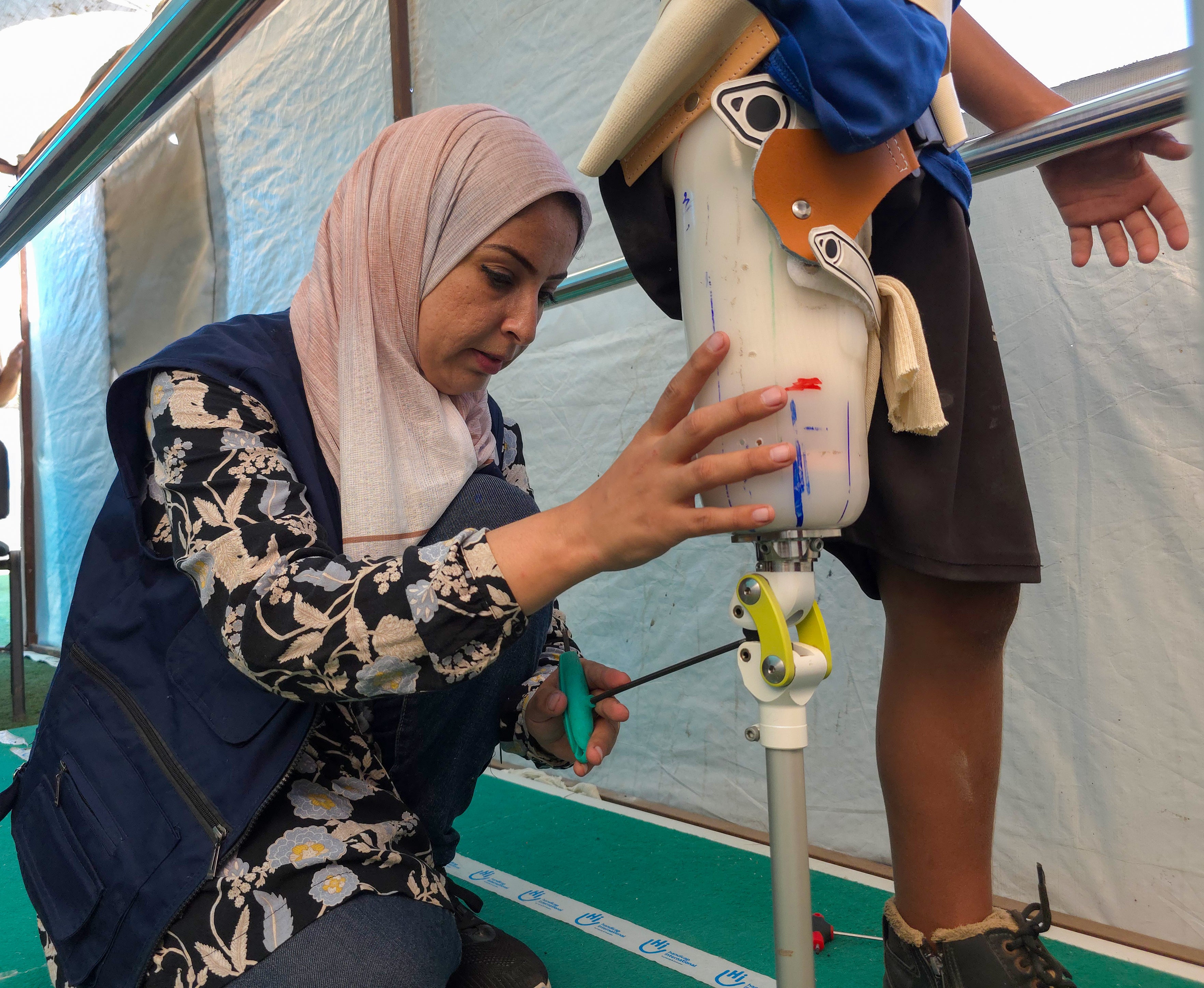The surviving hostages have at last been released along with several hundred Palestinian prisoners, but the struggle for survival of Gazan children who have lost limbs to Israeli bombs will be lifelong.
Since the war began in Gaza following the massacre by Hamas of more than 1,200 Israelis on 7 October, 2023, some 3-4,000 Gazan children, says Unicef, have lost limbs. The death toll to Israeli bombing has been at least 64,000, according to a Lancet journal count. This toll includes at least 15,000 children. With 10-15 child deaths a day in Gaza, the true number could be three or four times higher, says Ewan Phillips, chief executive of Koalaa, creators of soft upper limb prosthetics that are being used in Gaza.
Before this brutal war was triggered by the actions of Hamas two years ago, children made up half Gaza’s population of two million and there are more child amputees today in Gaza than anywhere else in the world. One of the organisations supporting amputees in Gaza is the Jordanian Restoring Hope Society whose logo reflects the trauma of limb loss.
As the co-founder of Merlin and chairman of a prosthetics company Nicholas Mellor had worked with amputees in Afghanistan, Sierra Leone and Ukraine, and been involved in guiding innovation in this field. Medecins sans Frontières reports babies as young as one undergoing amputations and the Humanity and Inclusion disability charity warns that 70-80 per cent of trauma cases in Gaza’s hospitals involve limb loss or spinal injuries, says Mellor. Nevertheless, there is, he says, a ray of hope. “When you return someone’s ability to walk you give them back their dignity, their independence and their hope for tomorrow.”
In 2023 King Abdullah II of Jordan asked Edward Hall, who had recently returned from a mission supporting amputees in Ukraine, to help set up a service for amputees inside Gaza. Working with Mellor, Dr Rami Farraj and Jordan’s Royal Medical Services, the result was Mobile Amputee Support Unit, or Masu, designed to provide a fully integrated system combining soft prosthetics, lower limb technology, smart sensors and electronic patient records. “Without Restoring Hope almost all of these children would have no chance of receiving the prosthetic limb they need until months or years after the end of the war,” says Phillips. Such delays, he says, are “devastating to a child’s neurological and psychological development”.
At a well-attended event at London’s Frontline Club last month, a British soldier who had had prosthetic legs fitted following a bomb explosion, told the audience that while he had chosen to be a soldier and to face the risks involved, children being bombed in search of food and water were tragically innocent victims. The event showed films of prosthetists in Gaza fitting prosthetic limbs supported by specialists by a video link and discussing the needs of victims. Most patients have multiple complications on top of the loss of their limbs. The prosthetic limbs have to be built and provided quickly so that children can live active lives and even learn to play again despite the horrors they have endured.
Of course, children’s bodies are constantly growing so the doctors and technicians must be prepared constantly to modify the sockets to fit the evolving shape of their residual limbs. Sockets can be fitted with smart sensors to measure the patient’s gait and help ensure ongoing support. This can provide data to show early warnings of any discomfort or complications due to the newly fitted prosthetic. Unfortunately, some Gazan parents refuse to cooperate, fearing that any sensors could be be monitored by hostile forces.
Unified efforts are essential. The event at the Frontline club was evidence of the coalition emerging as the world is confronted with the human cost of the war in Gaza, particularly the number of amputees. “It isn’t a choice between innovation and accessibility, between quality and speed, between research and implementation”, says Phillips. “It’s asking us to refuse those false choices entirely and work together to give everyone the best possible solution that exists today.”
Phillips explains how transformational this had been during a mission to Ukraine. He recalled Dima, who had lost both arms in an explosion. “Dima was one of the first Ukrainian soldiers fitted with a Koalaa soft prosthetic”, he writes. “It took less than half an hour to fit both arms and straightaway he was able to feed himself for the first time in months, proof that innovation can deliver in the toughest conditions when traditional clinical models fail.”
Phillips points out that it takes months to build new clinics, with traditional prosthetic clinics often costing as much as a million dollars to set up. “The equivalent infrastructure cost to get going with Koalaa’s ‘clinic in a bag’,” he says, “is $15 to cover the bag, a pair of scissors, a measuring tape and a screwdriver – training takes half a day, not several years and few cases are complex enough to require a clinician to do the fitting.”
In a conflict that has created more child amputees than anywhere else on earth, these innovations offer something increasingly rare in Gaza: the ability to give children back their tomorrow, one fitted limb at a time.











-1.png)


